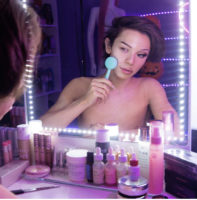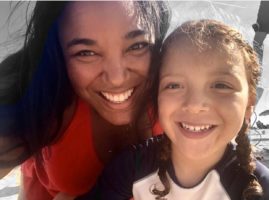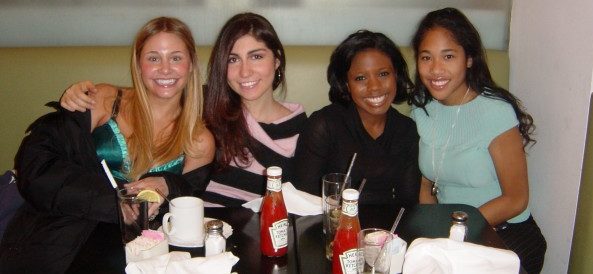To those who don’t see race,
A study followed 101 black teenagers in Washington D.C., to see how often they experienced racism. The teens reported more than 5,600 incidents in two weeks, which is, on average, 28 incidents of racism a week per child.
Children who reported more racism were more likely to suffer from short-term depression, loneliness, anxiety and sleeping difficulties.
So, you probably think because you don’t see color that makes you one of the good guys, right?
Wrong!
But, I understand why you would have that mentality.
Growing up, my parents never talked about race – at all. I had black friends. I had white friends and I had Asian friends. Neither my parents nor I ever referenced anyone by the color of their skin. As a kid, I perceived race the same as I did hair color or eye color. It had no significance beyond appearance.
Enter Your Email to Unseal Premium Content
In fifth grade, I remember learning about slavery and thinking how odd it was that people would be so ridiculous to categorize humans by the shade of their skin. And while we also learned about Martin Luther King Jr. and Rosa Parks, it was history class. So, I thought all of racism was a part of history. I had no sense of how close we were to that history and how discrimination still permeated our current society.
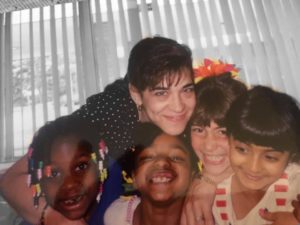

I had no idea about the difficulties that my classmates and friends encountered. And I most certainly was utterly blind to the advantages I had in life, based solely on my pale complexion.
I didn’t know black and Latino women make less than white women. While overall women make 80 cents to a white man’s dollar, black women make 61 cents and Latino women make 53 cents to a white man’s dollar.
I heard cliches like, “Life is not fair.” But I didn’t know that I was and would be throughout my lifetime benefiting from that unfairness.
I heard cliches like, “Life is not fair.” But I didn’t know that I was and would be throughout my lifetime benefiting from that unfairness.
It wasn’t until my senior year of high school that I got a real wake up call, receiving a glimpse of the harsh reality of racism in America.
One of my closest friends became a victim of police brutality.
We were still teenagers and she was stun gunned and beaten up for no good reason. Looking at her bruised body and the brokenness that I could read all over her face, I felt sick, angry, sad and confused. At first, I had no idea the assault had anything to do with race. I just thought those cops were jerks.
I told someone I was scared. I was scared the police would do that to me too.
This person said to me, “Lauren, it won’t happen to you. You are not black.”
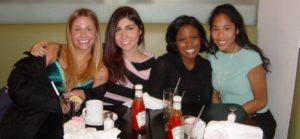

Shocked and furious, I thought to myself, “That’s messed up. That’s my friend and we need to fight back. We need to make this right.”
The only problem was that I thought the fight was against a couple of crooked cops, not an entire crooked culture.
I loved my friend and it broke my heart to see her harmed. I wanted to have her back, but it quickly became clear to me this wasn’t a dispute I could resolve during our lunch period or in an after-school club. More importantly, to truly be a friend to my friend, I not only had to try and change others, but I had to change myself.
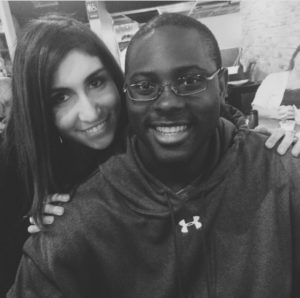

I became more aware and educated about racism by asking questions and reading about what was going on in the world. As I continued to dig into the issue, I was disturbed, as I realized how deep the roots of the problem lie and how my own colorblindness was helping racism to thrive.
I needed to start not only to see color but to understand the struggle that comes with it. Only then could I begin to realize that my friend’s horrifying experience not only wasn’t an isolated incident but rather part of a pervasive problem.
According to a study of 2015 police killings by the Guardian, Black Americans are more than twice as likely to be unarmed when killed during encounters with police as white people.
That doesn’t mean all police officers are bad – far from it. But there is a problem and a pattern that can’t be ignored.
Through the years, I have tried to stand up for right over wrong. As a white woman, I have talked about race. I have written about race and I have asked people a whole lot of questions about their experiences with racism. I am trying to help catalyze social progress and while my colorblindness is no longer getting in the way, yours is still an issue.
In 2018, I interviewed Cleveland Browns-then starting quarterback Tyrod Taylor. The story sheds light on what it’s like to be a black quarterback in today’s society. Taylor agreed to the interview and the topic. In the story, I included facts and data about how black quarterbacks are significantly more likely to be asked to switch positions and 1.98–2.46 times more likely to be benched than their white counterparts.
Taylor’s journey, in many ways, mirrored the documented challenges black quarterbacks face.
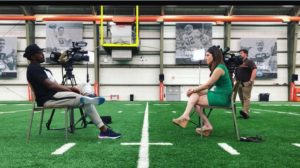

Interestingly enough, a couple of viewers attacked me. They told me because I called Taylor a black quarterback instead of just the Browns quarterback or a quarterback, I was racist. As I looked at the social media profile pictures of those offended, I realized all the people who called me racist or attacked the story were white. In all likelihood, they were probably among you – people who see themselves as colorblind.
The problem with colorblindness is if we ignore the fact that Taylor is specifically a black quarterback as opposed to just a quarterback, we also ignore the added challenges and unequal amount of opportunities that exist for him and all black quarterbacks.
If we don’t identify the imbalance specific to race, how can we begin to level the scale?
While I believe my parents raised my brother and me to value people by their character and not their skin color, we don’t live in a colorblind world.
I understand that you and I don’t experience racism. But that’s no excuse. You can still be ignorant without being hateful or intending harm. Ignorance doesn’t necessarily mean you don’t care. It merely means there is a lot you don’t know, but it’s up to you to choose to listen and to learn.
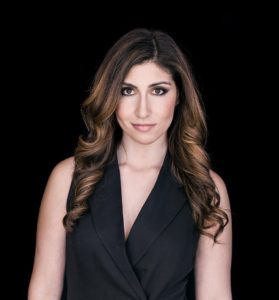

As we embark on Black History Month, I hope you all know what took me some time to figure out, which is that racism isn’t only in history. While it’s essential to understand how we got here, it’s also critical that all of us are aware of where we currently stand.
A child shouldn’t experience hate 28 times a week, as the aforementioned study stated. No child or adult should be experiencing hate at all.
Being a white person in our society, I don’t think we can ever truly know the full scope of racism. We will all always be ignorant to some degree. However, now, unlike when I was a child, I understand that the only way to begin to correct racism is by acknowledging that it exists.
So I am challenging you to join me in opening your eyes and your heart.
We must see all colors, so we can fight for a future where people feel love while living in a diverse world.
Listen, learn and let’s make a difference.



